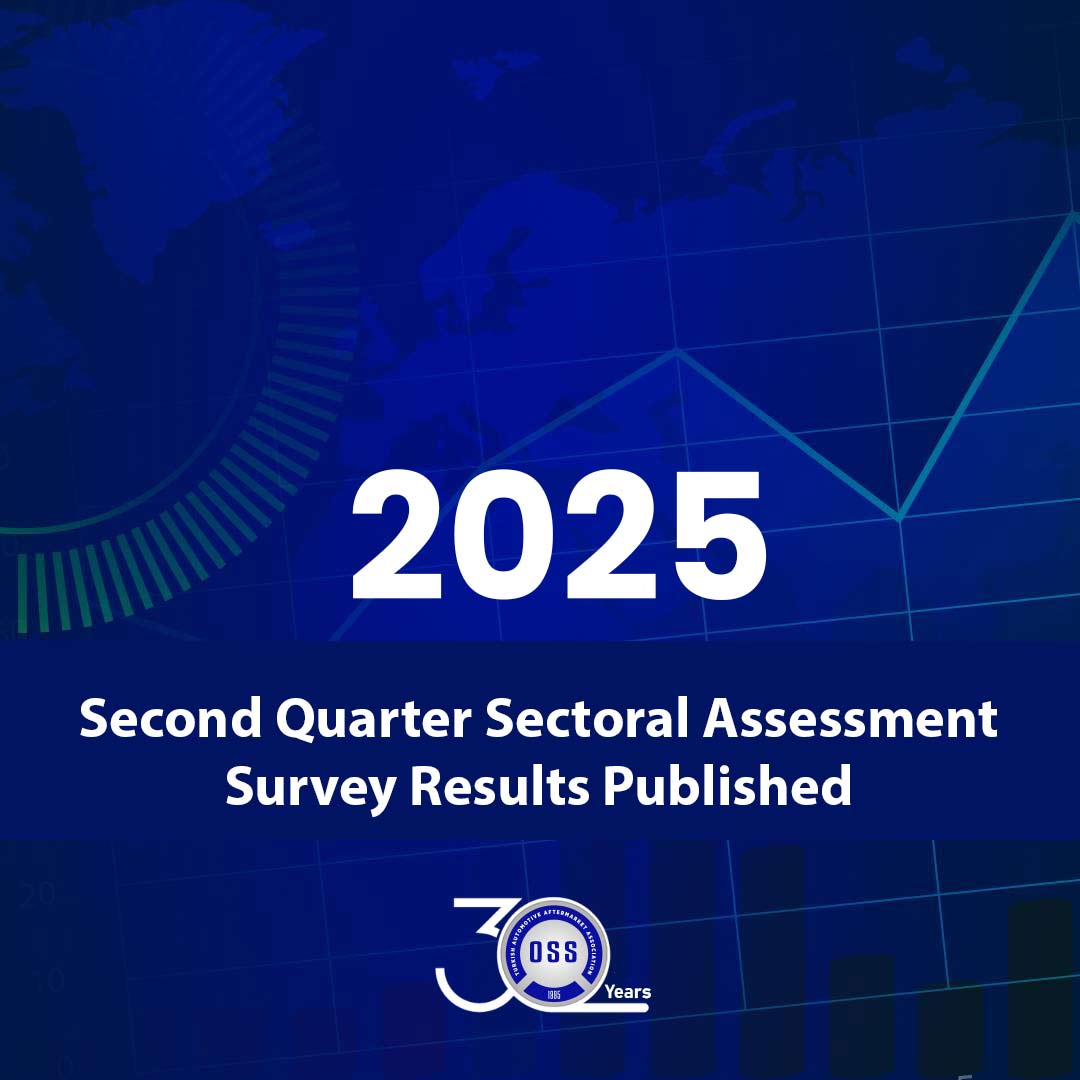OSS Association Evaluated the Second Quarter of 2025!

OSS Association Evaluated the Second Quarter of 2025!
The stagnation observed in the automotive aftermarket in 2024 continued into the second quarter of 2025. The sector, which failed to achieve growth in sales, exports, and employment during Q2 2025, does not expect growth in the third quarter either. According to the Automotive Aftermarket Products and Services Association’s (OSS) 2025 Q2 Sectoral Assessment Survey, domestic sales in dollar terms increased by an average of 1.58% compared to the same period in 2024. While only 15.2% of manufacturer members plan to make investments in the next three months, “cash flow problems” ranked first among the issues observed in the second quarter of 2025. “Excessive cost increases” and “loss of business and turnover” were also among the significant challenges cited by members. Commenting on the first half of the year from a sectoral perspective, OSS Chairman Ali Özçete stated:
“We still do not see any significant movement in the sector. While investment appetite is weakening, the cash flow pressure on businesses is steadily increasing.”
The Automotive Aftermarket Products and Services Association (OSS) evaluated the second quarter of 2025 in the automotive aftermarket sector through a survey conducted with its members. According to the OSS 2025 Q2 Sectoral Assessment Survey, the market showed signs of recovery in Q2 2025. Compared to Q2 2024, domestic sales increased by an average of 1.58% in dollar terms. In this period, distributor members’ sales increased by 2% in dollar terms, while manufacturer members recorded a 1.06% rise.
The Negative Trend in Collection Processes Continues!
The survey also included expectations for Q3 2025. Accordingly, a 0.62% decline in domestic sales in dollar terms is expected in the third quarter of 2025. The collection process rate, which was 40.8% in Q1 2025, slightly dropped to 40.5% in Q2 2025. While 11% of OSS members stated that collection processes had improved, 35.6% said they had worsened.
One in Four Companies Increased Employment!
According to the survey, 26% of members increased their employment in Q2 2025 compared to Q1 2025. Meanwhile, 45.2% maintained their employment levels, and 28.8% reported a decrease. Employment levels of manufacturer and distributor members were relatively close to each other.
Cash Flow Problems Remain the Biggest Challenge!
Challenges in the sector were once again one of the most striking parts of the survey. The leading problem observed in Q2 2025 was “cash flow problems” at 76.7%, followed by “excessive cost increases” at 69.9%. In addition, 47.9% of members cited “loss of business and turnover” as the third most significant challenge. Customs-related issues were mentioned by 30.1% of respondents, 24.7% pointed to “cargo costs and delivery problems,” 20.6% to “exchange rates and currency fluctuations,” and 19.2% to supply chain problems.
Only 15.1% of Members Plan Investments!
The survey also examined investment plans in the sector. The proportion of members planning to make new investments in the next three months dropped to 15.1%, marking the lowest level in recent periods. In the previous survey, 35.7% of manufacturer members planned investments, but this fell to 15.2% in the new survey. Among distributor members, the rate increased from 10% to 15%. Additionally, 16.4% of respondents expected the sector to improve over the next three months, while 31.5% predicted it would worsen.
Production and Exports Remain Steady!
The average capacity utilization rate among manufacturers in Q2 2025 was 72.73%, down from 76.30% in Q1 2025. Production increased by 0.61% compared to Q2 2024, while exports in dollar terms showed no change from the same period in 2024.
ommenting on the first half of the year, OSS Chairman Ali Özçete said:
“The stagnation that began in 2024 unfortunately continued in the first half of 2025. While the decline in both the domestic market and exports in Q1 gave way to a limited recovery in Q2, we still do not see any significant momentum in our sector. Our biggest challenge remains the ever-increasing cash flow pressure on businesses. Alongside cost increases in Q1, the drop in collection rates in Q2 is also noteworthy. This situation affects not only daily operations but also the future vision and investment decisions of our companies. The sharp decline in the proportion of companies planning investments over the last two quarters clearly indicates that our sector has entered a cautious phase.
Although short-term activity remains limited, expectations for a market rebound in the long term are strengthening, driven by accumulated demand. Furthermore, record sales in the new vehicle market will, in the future, increase demand for aftermarket services, further highlighting the importance and contribution of the aftermarket sector.
In terms of employment, we see mixed dynamics. While companies largely maintained their workforce in Q1, Q2 saw an increase in employment, which can be interpreted as a sign of optimism for the future. However, we must also take into account the proportion of companies that experienced job losses.”
Emphasizing that expectations for the second half of 2025 remain weak, Özçete added:
“Nearly one-third of our members expect conditions to worsen in the coming period. Therefore, it is very clear that we need structural steps, solution-oriented collaborations, and a more stable economic climate for a strong and lasting recovery.”